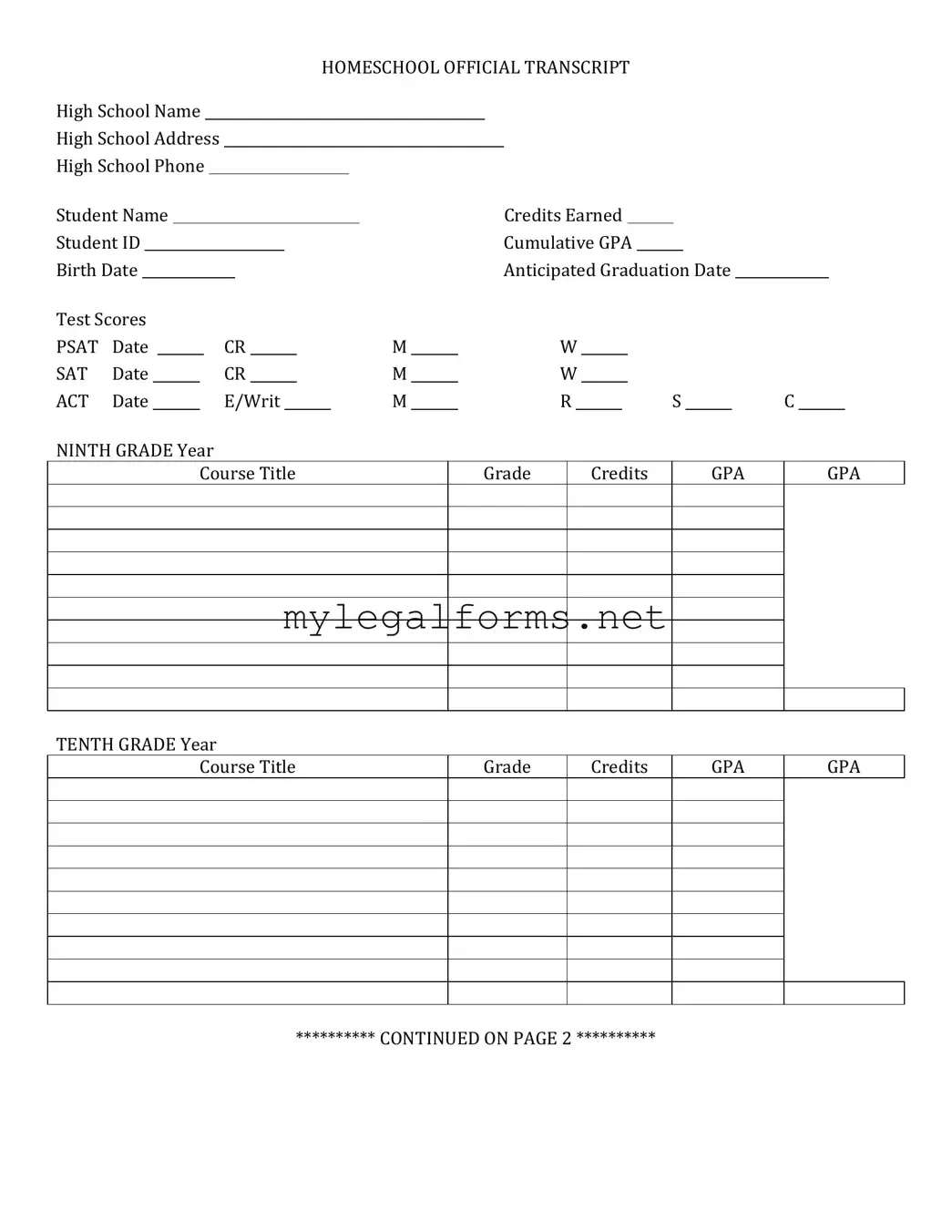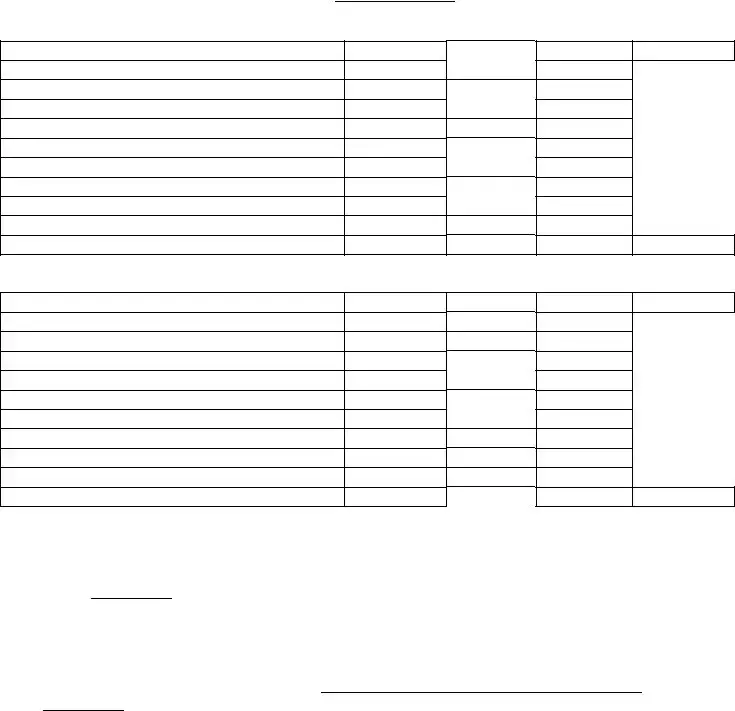Filling out a high school transcript form can seem straightforward, but many students and parents encounter pitfalls that could lead to complications. One common mistake is failing to double-check personal information. When entering names, dates of birth, or addresses, even a small typo can create significant issues later on. Always verify that all details are accurate to avoid delays in processing.
Another frequent error is neglecting to include all relevant coursework. Students often forget to list electives or advanced placement classes. This omission can undervalue a student's academic achievements. It's essential to provide a complete picture of one's educational background to ensure that all accomplishments are recognized.
Some individuals also struggle with the correct ordering of courses. Transcripts should reflect the chronological sequence of classes taken. Misordering courses can confuse the reader and might lead to misunderstandings about a student's academic progression. Keeping a clear and accurate timeline is vital.
Additionally, not providing the necessary signatures can be a significant oversight. Many forms require a parent or guardian's signature alongside the student's. Failing to include these signatures can result in the transcript being deemed incomplete. Make sure to check all signature requirements before submission.
In some cases, students may not realize the importance of including standardized test scores. If applicable, these scores can bolster a transcript by showcasing academic performance beyond coursework. Omitting them can mean missing an opportunity to strengthen an application.
Another mistake is not adhering to the format requirements specified by the institution requesting the transcript. Each school or college may have its own guidelines regarding how transcripts should be presented. Ignoring these specifications can lead to rejection or delays in processing.
Students sometimes forget to update their transcripts with recent grades or achievements. It’s crucial to ensure that the most current information is reflected, especially if the transcript is being submitted for college applications. Keeping everything up-to-date can make a significant difference in the evaluation process.
Some applicants may also overlook the importance of including a cover letter or additional documents. A cover letter can provide context to the transcript and highlight specific achievements or circumstances. Failing to include this can result in a lack of clarity about the student's background.
Another common error is not understanding the submission method. Some institutions require electronic submissions, while others may prefer physical copies. Misunderstanding these requirements can lead to delays or complications in the application process. Always clarify how the transcript should be sent.
Finally, a lack of communication with the school can lead to mistakes. If there are any uncertainties about the process or requirements, reaching out to school officials can provide clarity. They can offer guidance and ensure that the transcript is filled out correctly. Open lines of communication can prevent many common errors.


